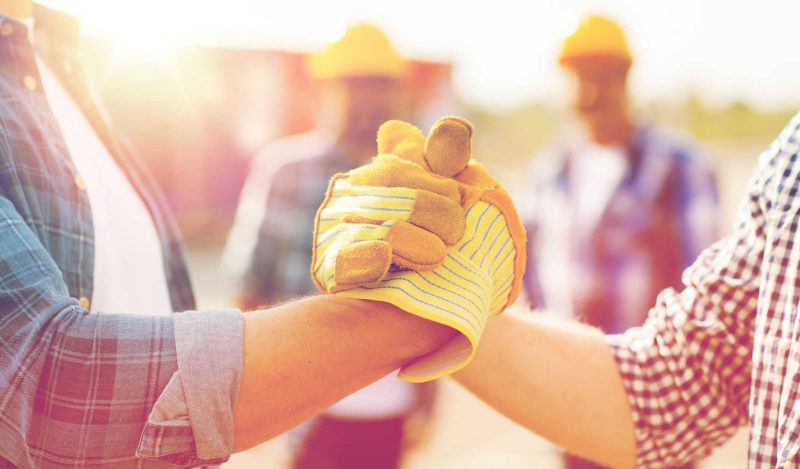Governments ordered us to stay in our houses in March 2020. Many did. They stayed inside for months, some for two years or more. Some are still staying home. With cellphone texting and talk, with moving digits and having Zoom Meetings on their laptops, they drew salaries. Unless they had enough money that they did not have to produce a salary, or they are adults whose parents provided them with a place to live and paid the bills.
Some strung together words on screens like I am doing now. Clicks on website buttons prompted food to appear on porches in packages, vacuum-sealed bags and cartons, neatly nestled with foam and cooling packs inside cardboard boxes. It almost seemed like magic. People clicked Amazon buttons, and everything from books to housewares, make-up, milk, and medicines, videos and computer games appeared in boxes on their doorsteps.
Children, ordered away from their closed schools and confined to their rooms, may have thought that everyone was staying home. We were told that it was the right thing to do. But actually, many people were not staying home. All over the world, workers had to go to work to make a living.
They also kept societies running. They kept populations fed. They provided electricity for Zoom meetings. They operated and maintained roads and kept water running to houses. Unprecedented stay-at-home orders caused me to think of all those who lived and worked in the physical world and continue to work in real worlds, real environments, where people make possible the lives of those who were privileged to stay at home, moving digits. Actually, electricity moved the digits – with real people building, installing, and maintaining the lines. A person at a screen merely organized the digits.
Many jobs did not stop when governments ordered people not to leave their houses. My husband’s father, a Polish immigrant, worked his whole career designing and building massive paper-making machines. He passed away this past year in his 90s. These machines, about as large as a city block, have often lasted for more than a hundred years; many of them still operate today and make paper. Operators, working 24 hours per day, only stop machines once per year for maintenance.
People, who run and maintain these machines and repair them when they break down, work in the physical world. At home on our computers during the shutdowns, we loaded printers with paper to print, sent out mailings for work or school, or printed papers for files.
Postal workers picked up mail from our boxes and carried it in bags, drove the bags to buildings where more people sorted it by area and zip code. Mechanics, more real people working in the physical world, maintained or repaired truck engines that power the vehicles that moved the mail across states and into cities and towns, to post offices, and to people’s mailboxes and porches.
My husband’s brother, from a Midwestern US state, services giant machines that process milk into cheese and ice cream and machines that make milk cartons and other machines that pour milk into cartons. He went to work every day during the shutdowns. People loaded trucks with milk and cheese and ice cream; truck drivers drove it to stores across the country. Mechanics maintained and repaired the engines powering the trucks.
While governments ordered us to stay home, I wondered, who is staying home? And who is not? My friend, a custodian at my school, recalled her previous job at a chicken plant, where for five years, she carried live chickens by the feet, five in each hand, to the station where they would be processed. She still has scars on her thighs from chickens pecking them. Other women who work at the plant, she said, have permanently knotted feet and ankles from their jobs standing in the same spot for the hours of their shift.
My grandfather worked more than 40 years for Container Corporation, a company that made cardboard boxes, like the ones Amazon uses or the ones used to pack milk and ice cream cartons at the dairy plant where my brother-in-law works. More people manufactured tape to close the boxes; others made and printed labels to affix to boxes, after which UPS drivers sorted and drove boxes to porches all over the country.
The more I looked, the more people gathered in my mind, the more hands I saw working, making life possible in our industrial economy. Everything we see around us in the physical world has been made by hands that build, assemble, fix, cut, pick, pour, package, lift, load – and a countless stream of other verbs.
Through 2020, and at all other times, workers in fields drilled oil, then more workers labored in chemical processing plants to turn oil into gasoline and diesel fuel that powers UPS trucks, delivering hand-packaged Whole Foods groceries or GrubHub restaurant food to people staying home. These are working hands, hands of real people with husbands and wives, parents and children. Hot restaurant food was cooked by real people in hot kitchens. They wore face masks, maybe just when the boss was nearby or when customers arrived for “contactless” or “curbside” pick up.
For people to have groceries delivered to their houses or for “contactless,” “curbside pickup,” farmers had to grow the food; animals had to be killed, cut up, processed, packaged, and delivered. I thought of the number of hands that made vegetables on plates possible – hands that picked and sorted because Americans don’t want spots or holes on their tomatoes. More hands packaged and delivered fruits and vegetables to stores.
During the middle of the shutdowns, some people staying home felt they needed to “quarantine” the delivered boxes, to leave them by the door, and not touch them for a set number of days because virus particles may be on boxes. Some sprayed disinfectant on boxes after they arrived.
How many hands had already touched the boxes and their contents before they appeared on that suburban porch? How many mostly Chinese hands had been on the toy and game parts of the toys and games that occupied their children and teenagers, ordered to stay inside and away from their schools and friends and extended families? Additionally, we also learned, as the shutdowns continued, that wiping didn’t really matter as the virus wasn’t on cardboard. It was mostly in the air, everywhere, and remains there.
Even Domino’s delivery pizzas required people who ground the spices, picked the tomatoes, ground them into sauce; required dairy plants to make the cheese; workers to build and service the dough-making machines; and of course, all the workers who made sturdy, elaborately printed cardboard pizza boxes. Delivery drivers, wearing masks when facing customers, fueled their cars with gas and oil.
Convenience foods required even more hands – cereals and Pop Tarts required people to run and service machines to pick grains, operators to grind and process them, more operators to run machines to add sugar and flavorings and colorings, and still more laborers to fill packages and boxes with cereals and Pop Tarts and then load those onto trucks.
While working and eating inside their houses, what if laptop or desktop computers broke down for the digit movers? Who made the parts to repair them? I envisioned women or girls in Chinese or Indonesian factories. Who had made the laptop to begin with? Where were they? Did she have children? Did he have a wife or parents to take care of? Who had made and assembled the parts for the cellphones of the stay-at-home population? What about the raw materials?
Whom in the Democratic Republic of Congo or Zambia or China mined the cobalt, or whom in Chile or China mined and processed the copper or whom in Jamaica or Russia mined the aluminum? These are all raw materials necessary for cellphone parts. I learned that gallium is the mineral used to provide the backlighting for cellphones’ LED screens. It is mined in Kazakhstan.
While people stayed in houses, sewage plants and wastewater treatment facilities continued to operate. People had to work at power plants to supply electricity to homes. Hands had built cellphone towers and satellites to enable phone and Internet reception. More hands maintained the towers and satellites.
Working hands were everywhere I looked. The more I looked, the more of them I saw. The lives of people working with their hands had not changed that much during the shutdowns – except that wearing a face mask may be very hard while doing physically demanding work in a loud, fast-paced manufacturing plant or in a chicken factory or while crawling beneath an engine or bending over one.
Before 2020, we may not have remembered or seen these real people with real hands doing real work in the physical world. Their lives mattered then and they matter now – even while many others stayed home or are still staying home.
Join the conversation:


Published under a Creative Commons Attribution 4.0 International License
For reprints, please set the canonical link back to the original Brownstone Institute Article and Author.









